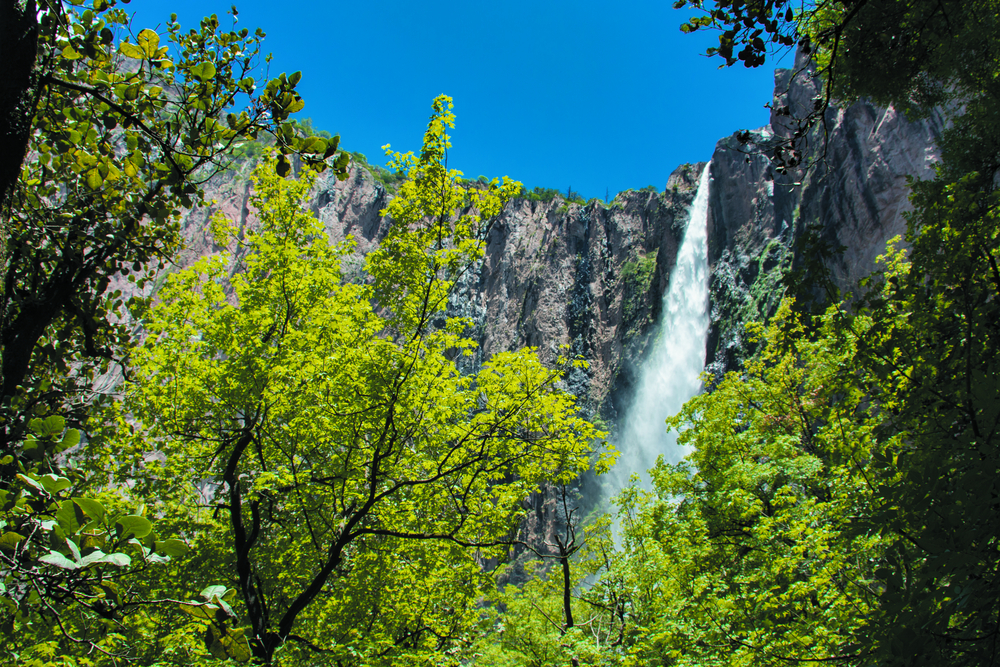Los Remedios Overview
Los Remedios National Park, known locally as Parque Nacional Los Remedios, is a protected area located in the far west of Naucalpan municipality in the State of Mexico, just northwest of Mexico City.
Established by federal decree in 1938, the park originally encompassed 400 hectares (approximately 990 acres). However, due to urban encroachment, its current area has been significantly reduced to less than 100 hectares.
The park’s terrain is characterized by the prominent Cerro Moctezuma, a mountain that holds historical significance as an Aztec observatory and is believed to be the resting place of Hernán Cortés and his men after their retreat from Tenochtitlan.
The landscape features a mix of clastic and volcanic rocks, with a dark, nutrient-rich soil layer supporting diverse vegetation. The climate is semi-arid with summer rains, an average annual temperature of 18°C, and annual precipitation ranging between 600 and 800 mm.
Vegetation in Los Remedios National Park includes species such as eucalyptus, white cedar, pine, ash, tepozán blanco, capulín, and grasslands. The park is home to various mammals like the ringtail (Bassariscus astutus) and the red-bellied squirrel (Sciurus aureogaster).
Bird species include the long-tailed dove (Columbina inca), berylline hummingbird (Amazilia beryllina), broad-billed hummingbird (Cynanthus latirostris), vermilion flycatcher (Pyrocephalus rubinus), and black-backed oriole (Icterus abeillei). Reptiles such as terrestrial garter snakes (Thamnophis spp.) and spiny lizards (Sceloporus spp.), as well as amphibians like the canyon tree frog (Hyla arenicolor), also inhabit the area.
A notable feature within the park is the colonial-era aqueduct, constructed in stages beginning in 1616 under Viceroy Diego Fernández de Córdoba. The aqueduct spans 500 meters with fifty arches, each standing 16 meters high and extending 1.7 meters into the ground.
Initially designed to transport water from a spring in San Francisco Chimalpa to the Sanctuary of the Virgin of Los Remedios and nearby villages, the aqueduct now serves as an architectural monument.
Visitors to Los Remedios National Park can engage in various outdoor activities such as hiking, mountain biking, and birdwatching along well-maintained trails. The park’s rich biodiversity and historical landmarks offer a unique experience for nature enthusiasts and history buffs alike.
Despite its attractions, the park faces significant conservation challenges. Over the past decades, illegal settlements and authorized urban developments have encroached upon the park’s territory, reducing its original size by approximately 75%.
This urban pressure has led to deforestation and habitat loss, threatening the park’s ecological balance. Efforts by federal and local authorities to address these issues have been limited, and the park currently lacks a comprehensive conservation and management plan.
Los Remedios National Park offers a blend of natural beauty and historical significance, providing visitors with opportunities to explore diverse ecosystems and cultural landmarks. However, ongoing conservation efforts are crucial to preserve this valuable natural and historical resource for future generations.
Park Map
Los Remedios National Park Highlights
Share your clicks with us
Related National Parks More Mexico

Huatulco National Park

Insurgente Jose Maria Morelos Y Pavon National Park

Insurgente Miguel Hidalgo y Costilla National Park

Isla Isabel National Park

Isla Marietas National Park

La Malinche National Park

Lago de Camecuaro National Park

Lagunas de Chacahua National Park

Lagunas de Zempoala National Park










































































